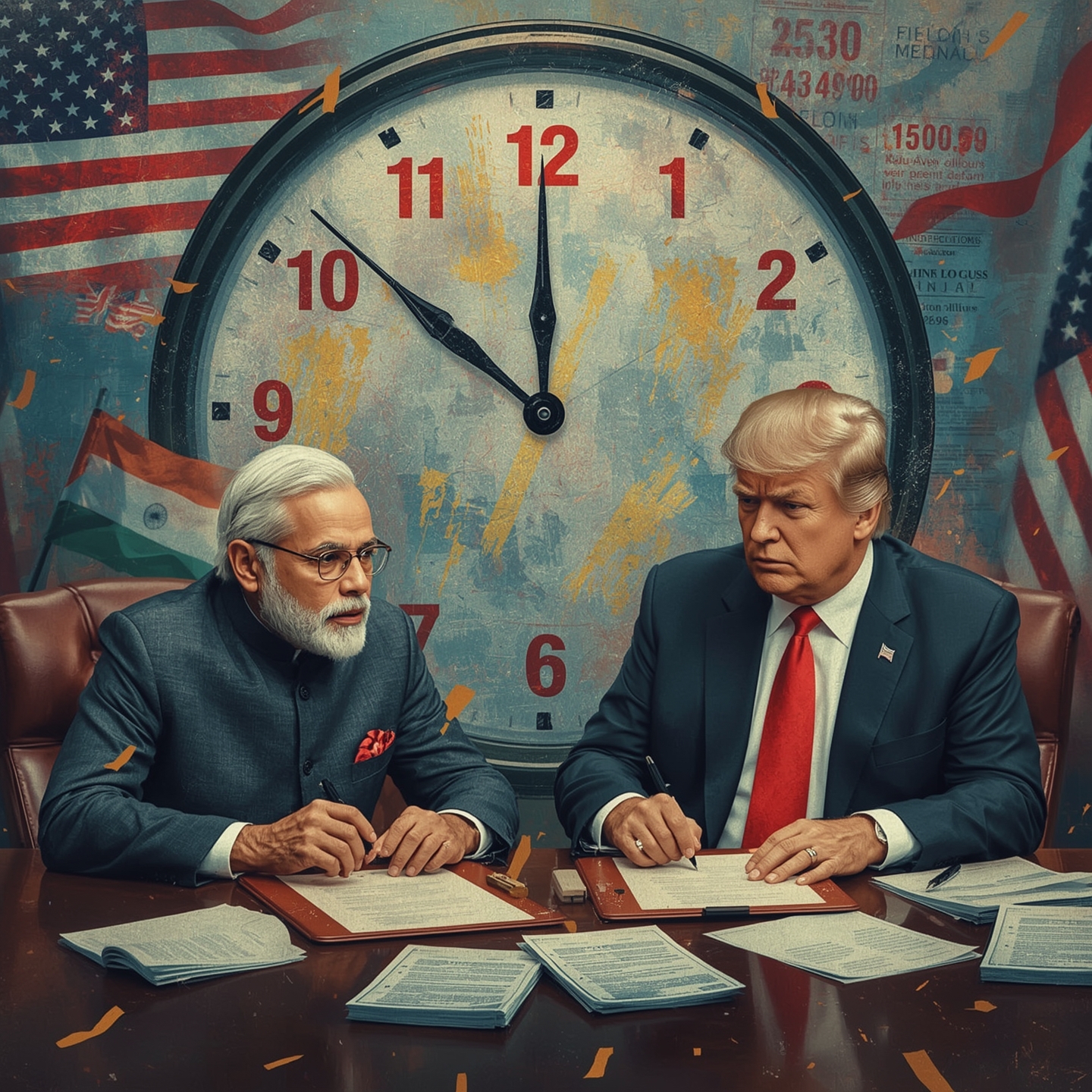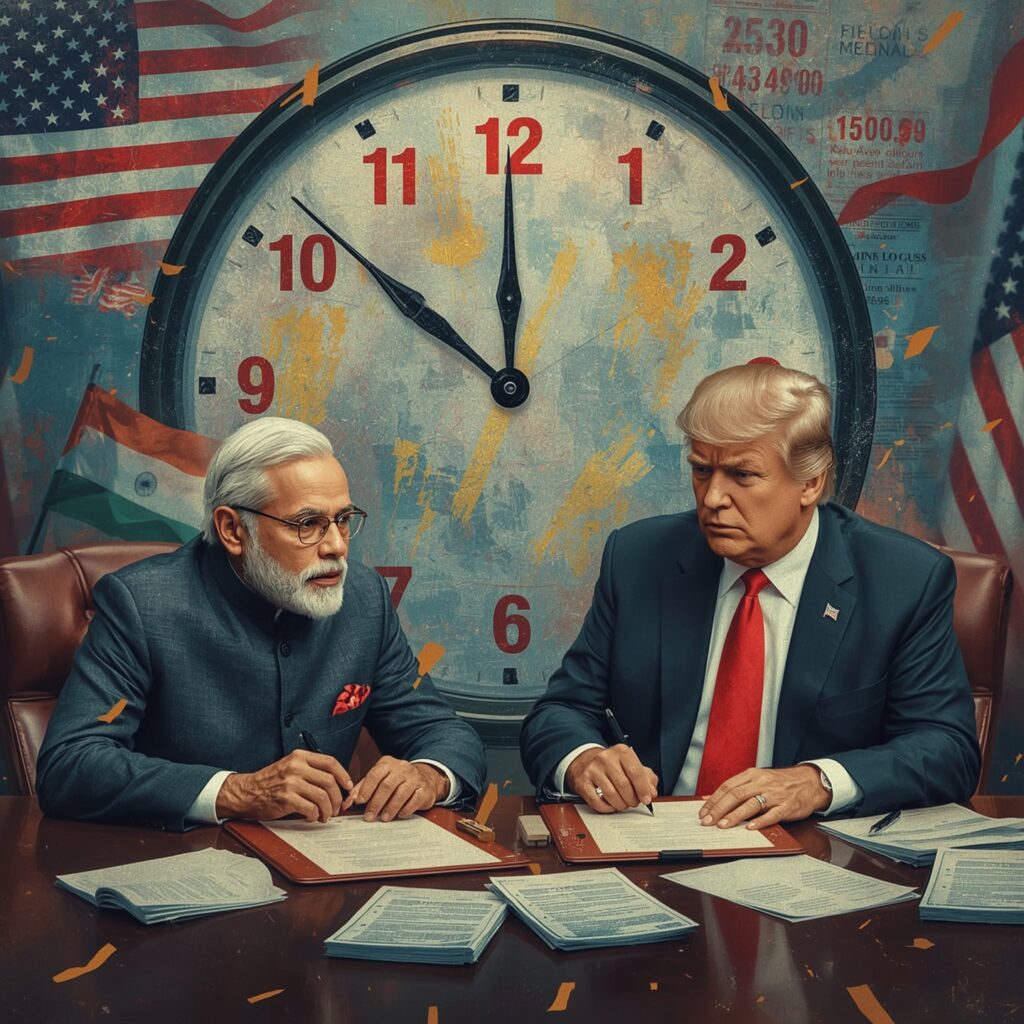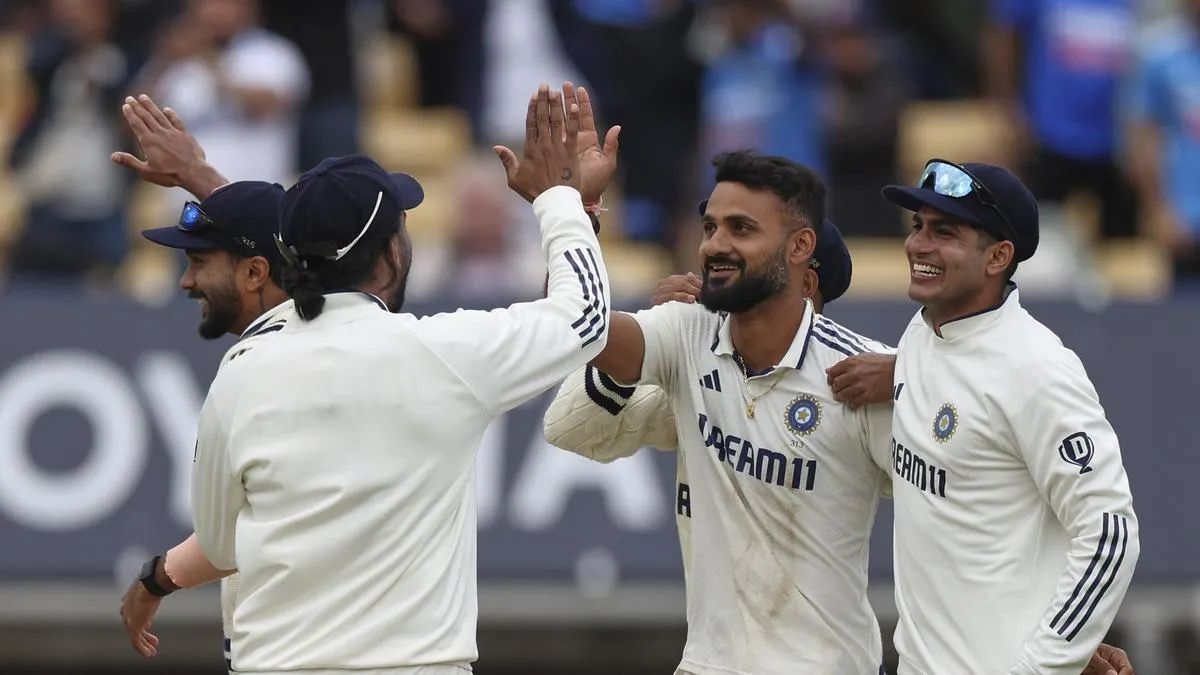
Introduction
In a world where global economies are tightly interwoven, few events create waves like the possibility of U.S. tariffs under the leadership of Donald Trump. As the 2024 U.S. presidential election looms and the tariff clock ticks, the pressure is mounting on nations worldwide. As Trump’s Tariff Clock Ticks.
Among the most affected is India, which finds itself racing against time to finalize a historic $500 billion trade pact with the United States. This landmark agreement could reshape the future of Indo-U.S. relations, set a new precedent for global trade partnerships, and shield India from the looming threat of Trump’s aggressive tariff policies.
This article delves deep into the implications of the India-U.S. $500 billion trade pact, explores the urgency created by Trump’s tariff clock, and analyzes the economic and geopolitical stakes for both countries.

Understanding the Context – What is Trump’s Tariff Clock?
The Return of Tariff Politics
Donald Trump’s “America First” trade policy was a defining feature of his presidency. With the 2024 election season heating up and Trump eyeing a return to power, his advisors have signaled a possible reinstatement of aggressive tariffs on several nations, including India and China.
The term “Trump’s tariff clock” refers to the countdown until these policies may be reintroduced. For countries like India, it’s not just about avoiding duties—it’s about preserving and expanding access to one of the world’s largest markets.
Impact of Past Tariffs on India
During Trump’s previous term, India was stripped of its Generalized System of Preferences (GSP) status in 2019, affecting nearly $6 billion worth of exports. In retaliation, India imposed its tariffs on U.S. products. Though trade relations normalized under Biden, the tariff threat looms again, prompting India to fast-track trade talks.
The $500 Billion Trade Pact – What It Means for India and the U.S.
Aiming for a Historic Milestone
The India-U.S. $500 billion trade pact isn’t just symbolic—it is strategic. Current bilateral trade between the two nations stands at approximately $200 billion. The pact aims to more than double trade flows, making India a core ally in the U.S.’s Indo-Pacific economic strategy.
Key Sectors Included in the Trade Pact
- Defense and Aerospace
India is a growing defense market. The U.S. aims to sell advanced fighter jets, drones, and surveillance equipment while boosting co-production under the “Make in India” initiative. - Technology and Semiconductors
Amid the global semiconductor shortage, the U.S. wants to diversify supply chains by investing in India’s tech infrastructure. - Energy
Liquified Natural Gas (LNG), renewables, and nuclear energy cooperation form a major part of the proposed trade expansion. - Pharmaceuticals and Healthcare
India is already a key exporter of generic drugs to the U.S. The new pact would ease regulations and promote innovation sharing. - Agriculture and Food Processing
U.S. agriculture exports stand to benefit from reduced tariffs, while India seeks access for its organic and processed food products.
Why the Rush? – The Tariff Clock’s Ticking Impact
Economic Pressure and Political Motivation
With Trump’s tariff clock ticking, Indian policymakers realize that any delay might leave India vulnerable to renewed sanctions. Both nations are keen to ink the deal before a Trump presidency can alter the terms.
Moreover, Prime Minister Narendra Modi’s government views this pact as a strategic masterstroke, cementing India’s position as a global manufacturing and export hub.
Trade and Geopolitical Strategy
The United States, facing challenges from China and Russia, views India as a democratic counterbalance in Asia. The $500 billion trade pact not only ensures economic gains but also reinforces military and diplomatic ties in the Indo-Pacific region.
Challenges in Finalizing the India-U.S. $500 Billion Trade Pact
Tariff Disagreements
While both sides agree on the big picture, disputes remain over tariff structures. The U.S. wants India to cut duties on tech goods, whiskey, and automobiles, while India demands fewer restrictions on its textile and agricultural exports.
Intellectual Property and Data Privacy
The U.S. continues to press India on IP enforcement, especially in pharmaceuticals and software. On the other hand, India remains cautious of American demands to weaken data localization norms.
Labor and Environmental Standards
U.S. negotiators are keen on embedding labor rights and environmental protections into the trade deal, issues that could complicate India’s export policies and small-scale manufacturing sectors.
The Bigger Picture – Strategic Benefits of the Trade Pact
Diversifying Supply Chains
Post-COVID, the world realized the risks of over-dependence on China. The India-U.S. trade pact offers businesses a “China plus one” alternative. With increased American investment, India could become a critical player in global supply chains.
Boost to the Indian Economy
If executed, the pact could:
- Increase foreign direct investment (FDI)
- Generate millions of jobs
- Enhance exports in critical sectors
- Strengthen the Indian rupee through better dollar inflows
Strengthening U.S. Influence in Asia
A deeper trade relationship with India complements U.S. efforts to fortify alliances through QUAD (Quadrilateral Security Dialogue) and IPEF (Indo-Pacific Economic Framework).
What Experts Are Saying
Economists and political analysts are divided. Here are a few perspectives:
- Optimistic View:
“This trade pact is a golden ticket for India. It positions the country as a manufacturing hub while strengthening ties with the world’s biggest economy.” – Rakesh Mohan, Former RBI Deputy Governor - Cautionary View:
“While the $500 billion target sounds ambitious, actual implementation will face hurdles in tariffs, non-tariff barriers, and domestic politics on both sides.” – Alyssa Ayres, Council on Foreign Relations - Geopolitical Lens:
“The pact is more than trade—it’s about strategy. It’s a chess move in the global power play against China.” – Michael Kugelman, Wilson Center
Conclusion
As Trump’s tariff clock ticks, India and the U.S. are making a high-stakes dash toward sealing a $500 billion trade pact that could alter the course of their economic and strategic relationship. This isn’t just about avoiding duties or signing another bilateral agreement—it’s a defining moment in global trade and diplomacy.
The proposed pact is a bold attempt to shield Indian exports, ensure strategic cooperation, and present a unified front in a world increasingly divided along economic lines. While the road to $500 billion is full of hurdles, the urgency created by Trump’s potential return to power has injected momentum like never before.
Whether this pact becomes a cornerstone of 21st-century trade or another failed negotiation depends on how both sides navigate the ticking clock, the political landscape, and the promise of a stronger, mutually beneficial partnership.
Description: As Trump’s tariff clock ticks, India and the U.S. race to finalize a $500 billion trade pact to reshape global trade and protect strategic ties.








